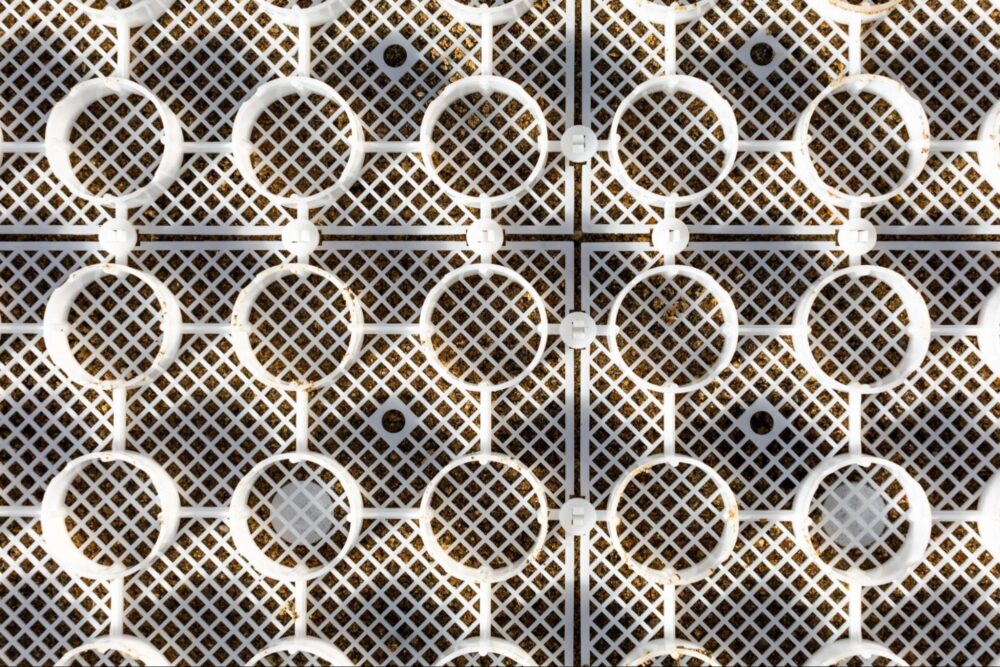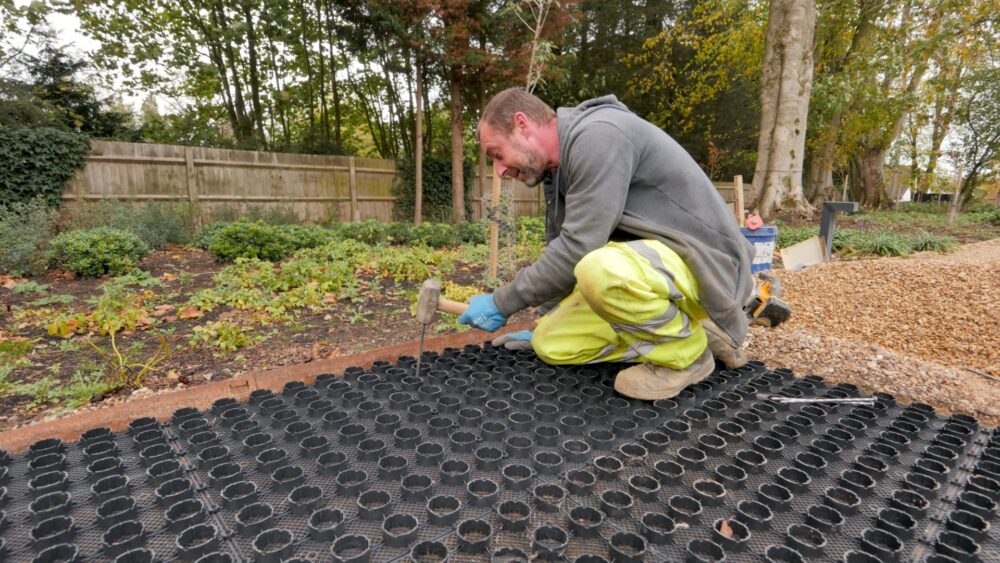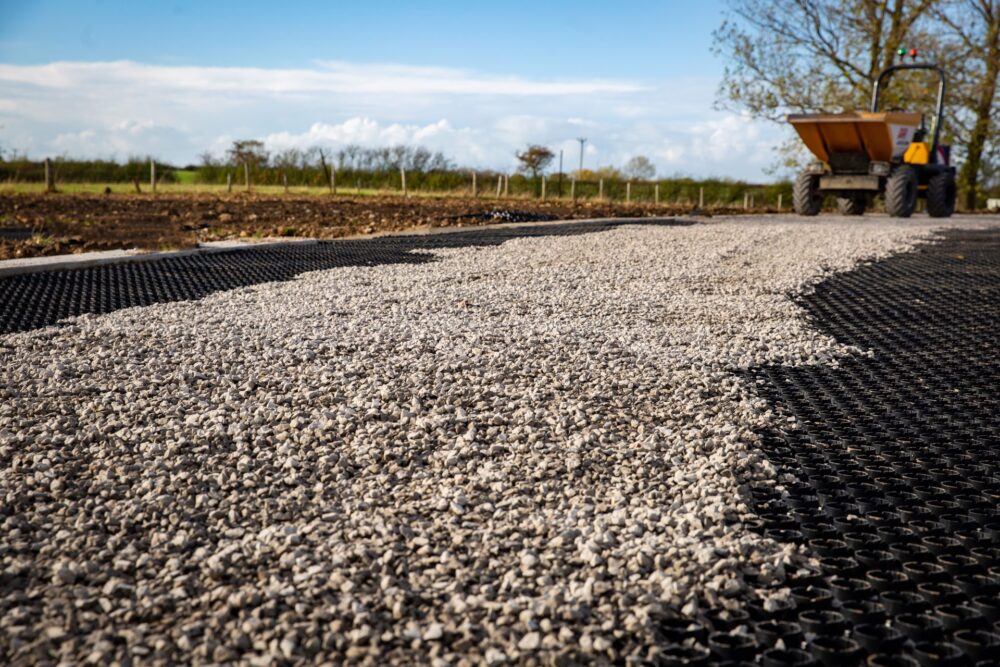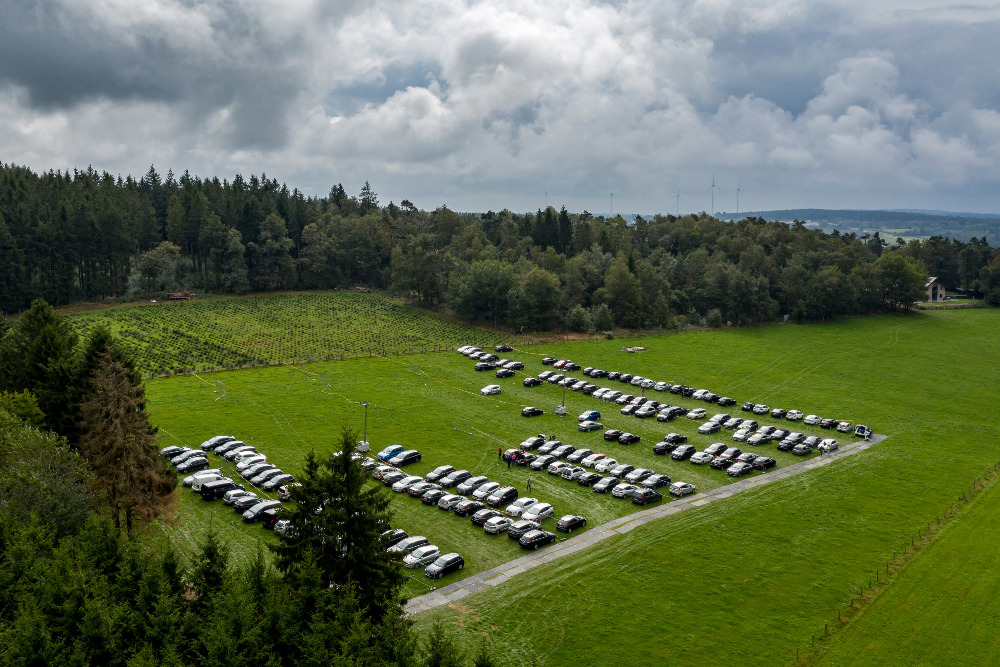If you’ve ever used a gravel driveway, you’ll likely be aware that they have one major fault: gravel is mobile. So, while they look good and are cost-effective to put in, over time the gravel will disperse. It’ll be dislodged by wheels, kicked by children, pushed into mounds, and scattered across the neighbourhood. Leaving bare patches on your driveway, and an uneven surface for you to park on. That’s why so many people have taken to install gravel grids to keep their gravel in place and their driveway neat. But gravel grids aren’t the only solution. Gravelrings are a very viable alternative. So, what’s the difference, and which is best for you?
Gravelrings vs gravel grids

What are gravel grids?
Gravel grids are mats made out of plastic with a repeating square or hexagonal pattern. They come in a range of sizes and depths, with different load ratings. They should be laid on preprepared ground, ideally with a geotextile membrane laid within the sub-base, to prevent the surface from sinking or rutting overtime. Gravel can then be spread across the top or placed in each aperture.
What are they?
Gravelrings work on a similar premise. Made from 100% recycled plastic, they create a porous paving module comprised of interlocking rings. At only 25mm deep, they require less groundwork for installation. And because they are molded onto a mesh-backed base, they do not require a geotextile membrane. This helps to ensure that drainage is not impacted. So, your driveway should always be puddle-free. And they reduce overall project costs because less gravel is needed to fill the system
Why choose gravel grids?
- Gravel grids have become essential in the construction of a driveway.
- They’re affordable and they are well-known, meaning that it’s easy to find a contractor to install them.
- They keep gravel in place – a strong, stable base is formed to mitigate the issues associated with loose gravel surfaces.
Why choose gravelrings?

One of the reasons why people choose gravel over cement, or tarmac driveways, is drainage. Sustainable Urban Drainage Systems (SuDs) aren’t yet a requirement for developments. But as flooding becomes more of a problem, it seems likely that they will be. The drainage provided can help to prevent localised flooding, and pollution from traveling into local waterways. And even without planning concerns, no one wants to splash into a puddle when they get out of their car. Gravel can help to prevent drainage issues, but only when used properly. Traditionally, gravel grids have required a geotextile membrane to be laid on top of the sub-base before installation. This helps to prevent weeds from growing inbetween the gravel. But it could also hamper drainage. More recently, permeable geotextile membranes have been more widely used. But one of the benefits of gravelrings is that the mesh membrane can prevent weed growth without hindering drainage. Although, it must be noted that nothing can stop seeds dropped from above from finding a home.
Gravelrings have also shown to be more effective at keeping gravel evenly distributed and in place. This is largely because the circular design does not have any corners. Ensuring that no parts of the matting are inaccessible. Gravelrings are made out of recycled plastic and can be recycled after use, making them a more sustainable option.
If you wish to install a gravel driveway or pathway, some form of grid system is the only sensible solution if you wish to avoid constant bare patches and maintenance. Both gravel grids and gravel rings will help you to create a tidier and less frustrating finish. But if you’re concerned about drainage and are interested in more sustainable solutions, then gravelrings provide the only viable option.
Get in touch with Beauxfort to to arrange a gravelrings quote.



